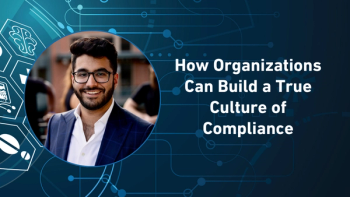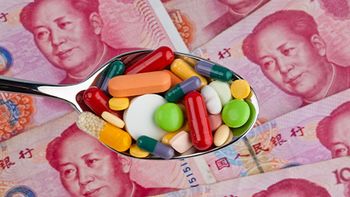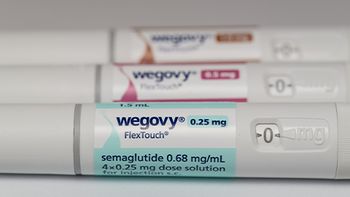
- Pharmaceutical Commerce - September/October 2011
Drug shortages are opening the door to price gouging
Hospital pharmacies need to be vigilant in ensuring safe supplies of scarce drugs
Reports from the American Hospital Association, American Society of Health-System Pharmacists, University of Michigan and the Premier healthcare alliance found that the vast majority of hospitals nationwide are experiencing life-threatening shortages of medicines needed to provide essential patient care. The University of Utah forecasts more than 360 products reaching shortage levels by the end of the year, the highest in history.
We might hope that in this time of crisis, people would band together and do everything they could to help pharmacies get the drugs they need, when they need them. Based on a recent compilation of offers received by Premier members, price gougers are taking advantage of this shortage, using it as an opportunity to charge outrageous markups. In one case, a hospital reported a generic beta blocker medication that normally sells for $25.90 being offered for $1,200—a 4,533% markup.
In other cases, offered markups have been as high as 3,980% for chemotherapy medicines to treat leukemia and non-Hodgkin’s lymphoma, and 3,170% for medicines to help cancer patients retain bone marrow. Similar mark-ups have been scene for medicines used to sedate patients in surgery, to dilate veins and prevent brain or heart spasms, and to prevent damage during a heart attack.
These are hardly rare examples. Hospitals across the nation report being asked to pay an average of 650% more for shortage products, compared to Premier’s base contract price.
Safety concerns
Modern medicines are highly sophisticated, requiring appropriate storage and handling, and specific temperature or other controls to ensure safety and efficacy. This is why distribution is highly regulated, with strict standards for licensure, as well as requirements to record the product’s chain of custody from manufacturer, to distributor, to pharmacy.
So, when price gougers emerge with products that the manufacturer and reputable distributors can’t supply, it begs several questions: Where and how are they getting medicines that no one else can? How can the integrity of these drugs be ascertained?
Price gougers often obtain shortage medicines from questionable sources, called “gray” markets. According to a Pew Health Group report, medicines in the gray market are often bought and sold across state lines, moved in whole or partial lots, repackaged or relabeled. The result is a complex web of transactions, involving dozens of trading partners, which can make it almost impossible to determine the supply source or the product’s authenticity.
Because of the profits that can be made off shortage products, as well as the ease with which product origins can be obscured, gray markets pose potential patient safety risks.
In essence, this adds insult to injury. Not only are pharmacies being asked to pay the price gouger’s premium, but in some cases they can’t be sure that the medicine they’re buying is safe or even the real thing. This is just taking advantage of some of our most vulnerable citizens in their time of need.
Putting an end to gouging
A key way to stop price gouging is to address the drug shortages that lead providers to look for alternative sources of supply. But no one cause explains drug shortages. Consolidation of prescription drug manufacturers and unpredictable supply problems for raw ingredients can all have an effect.
Likewise, no easy solution exists to address the problem. Government cannot order the production of more drugs, but they can work with manufacturers to give pharmacies advance notice of pending shortages. Government can also ease some of the regulatory burdens associated with drug approvals, and expedite quality inspections in emergency situations.
But the private sector has a role to play as well. Drugs from any unknown sources, including those offering inflated prices, should be reviewed to look for legitimate exchange of product between points of sale to and from licensed distributors and buyers. This is the best way for pharmacies to avoid gray markets, and ensure that medicines are safe.
Pharmacies should also refuse to do business with any organization that can’t verify its supply source and appropriate state licensure. Suspicious organizations should be reported to the Food and Drug Administration.
How to ensure safe, reliable purchases
In an effort to provide hospitals and health systems nationwide with guidance, Premier developed the following series of actions should be taken to ensure a safe, reliable purchase. Following these best practices should help hospital pharmacies avoid the gray market and conduct business with legitimate, licensed suppliers only.
1. Understand risks. Fully understand the risks that the gray market can pose to your patients and the facility, including the possibility that supplied drugs may be counterfeit, stolen, diverted, mishandled and/or adulterated. Engage with your legal and risk management departments locally to better comprehend the differences between a legal and an illegal operation.
2. Develop and communicate policy for purchasing decisions. Develop a policy for how your pharmacy department will decide which distributors and suppliers to do business with. Communicate the policy and process for any exceptions to administration, medical staff, nursing, pharmacy staff, purchasing department, etc.
3. Consider and document exceptions to policy. Carefully consider and document exceptions that may be allowed to your existing policy, such as emergency loans from other hospitals or purchases from sources outside of normal suppliers/distributors.
4. Confirm wholesaler, distributor and supplier licensure with authorities. At a minimum, supplies should only be purchased after pharmacists confirm with the State Board of Pharmacy or Department of Health that the distributor is appropriately licensed as a wholesale distributor of pharmaceuticals. The drug’s manufacturer also will be able to verify whether the distributor is an authorized distributor of record (ADR). Purchases from non-ADRs should be subject to additional scrutiny, such as verification from the NABP website that the distributor is VAWD accredited.
5. Confirm receipt of drug pedigree with all appropriate information. Confirm that any non-ADR will provide a pedigree (hard copy or electronic) prior to or upon purchase, and that each of its listed transactions are bona-fide and can be authenticated and tracked back to the manufacturer’s approved distributor of record.
6. Keep records of suspect organizations. Keep records of any vendors you have refused to do business with and reasons for those decisions to provide pharmacy staff with a resource to check prior to making purchases.
7. Compare and scrutinize purchases. Don’t use drug if there are concerns. Whenever a purchase is made from a new supplier, compare and scrutinize the package, label (font, color, size) and contents. If the product label appears to have been altered, doesn’t appear consistent with earlier purchases, has residue left near the label and/or content appears to be different, question its authenticity. Also, listen to patients who often can detect similar abnormalities.
8. Consider reporting any suspect suppliers to all appropriate authorities/organizations. Consider reporting suspect suppliers that may be trafficking in counterfeit, stolen, diverted and/or adulterated product to your State Board of Pharmacy, the FDA’s MedWatch reporting site, and any applicable local, state or federal law enforcement authorities. Similarly, consider reporting any violations of state or federal pedigree laws to both the FDA and state authorities. PC
ABOUT THE AUTHOR
Mike Alkire is the Chief Operating Officer of Premier, Inc., a leading group purchasing organization (GPO) for hospitals.
Articles in this issue
about 14 years ago
A Roadmap to Optimizing Marketing Operationsabout 14 years ago
Fix the Drug Shortage Problem- Nowabout 14 years ago
HDMA distributor sales are up 4.6%, to $274.5 billion through 2010about 14 years ago
Next chapter in drug shortages debate focuses on independent wholesalersabout 14 years ago
UPS Healthcare Logistics announces new cold chain optionabout 14 years ago
Contract Packagers, 3PLs Vie for Pharma 'Kitting' Servicesabout 14 years ago
2011 Product Security Report: Back to the FutureNewsletter
Stay ahead in the life sciences industry with Pharmaceutical Commerce, the latest news, trends, and strategies in drug distribution, commercialization, and market access.





